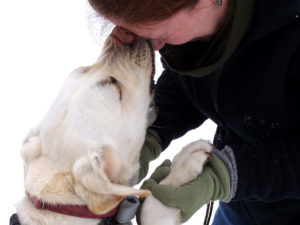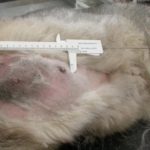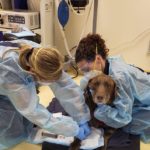Introduction
According to veterinarians about 30% of male dogs and 50% female dogs older than the age of 10 suffer from such fatal disease as cancer, which causes a lot of pain and terror, leave alone decreasing the life expectancy of a poor pet.
Common Types Cancer
Dogs can have the same cancer forms as humans. The only difference is in the rate of spread of the disease. For example, people are subject to fast developing of lung cancer, stomach and intestine cancer, as for dogs the fastest forms of cancer in the are in the first place skin cancer, breast cancer, bone , blood and bladder cancer(leukemia)
Signs
Tumors affecting the colon, kidney, liver and other internal organs of Labrador Retriever, are almost impossible to diagnose. They are impossible to detect by palpation until stage III–IV, and symptoms of the disease are extremely vague and do not give an accurate picture.
In the case of lung cancer it can be coughing. The tumor of the liver causes intoxication, pale mucous membranes, accumulation in the abdominal cavity fluid, anemia, and weakness; lesions of the intestines – abnormalities in defecation, change of stool and the appearance in the stool of blood, and in the later stages of intestinal obstruction.
The most striking pattern is in females with bowel cancer. A sick dog has disturbances of estrus, lengthened the estrus phase of the cycle, constantly observed bloody discharge from the vagina.
Experienced veterinarians can detect palpation of tumors in the abdominal cavity as a slight increase in bodies, but the most effective is still a biopsy carried out when cancer is suspected.
Diagnostics and Treatment
Treatment of internal cancers is done by surgery; especially operations depend on the histological structure, location and stage of tumor development. All interventions are performed by experienced veterinarians in clinics.
In order to diagnose the dog has a malignant tumor, you must regularly conduct these inspections, and pay attention to the following, albeit minor, changes:
- lameness and reluctance in the morning to get up and go to the place;
- baldness over the tumor;
- symmetrical alopecia in the anus in case of presence of tumors;
- long act of defecation;
- the occurrence of perineal hernias in dogs;
- intractable to medical treatment change of the defecation;
- the formation of single or multiple seals in the mammary glands in females;
- unexplained weakness;
- eating disorders, general depression of a dog, pallor of the mucous membranes;
- increase in peripheral lymph nodes.
Final diagnosis must be performed by an experienced veterinarian after a comprehensive study, objective of the owner is the timely access to a specialist.













